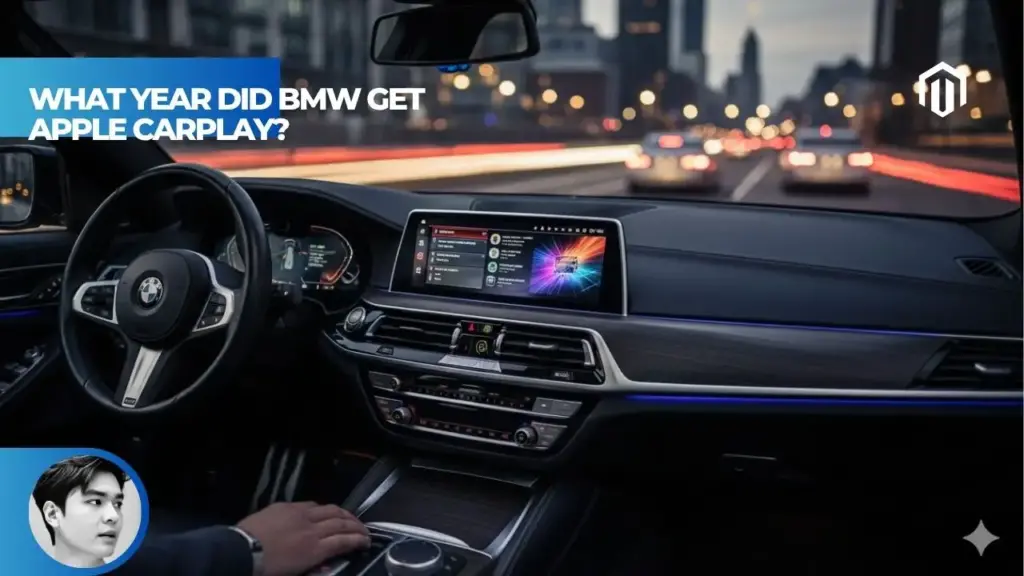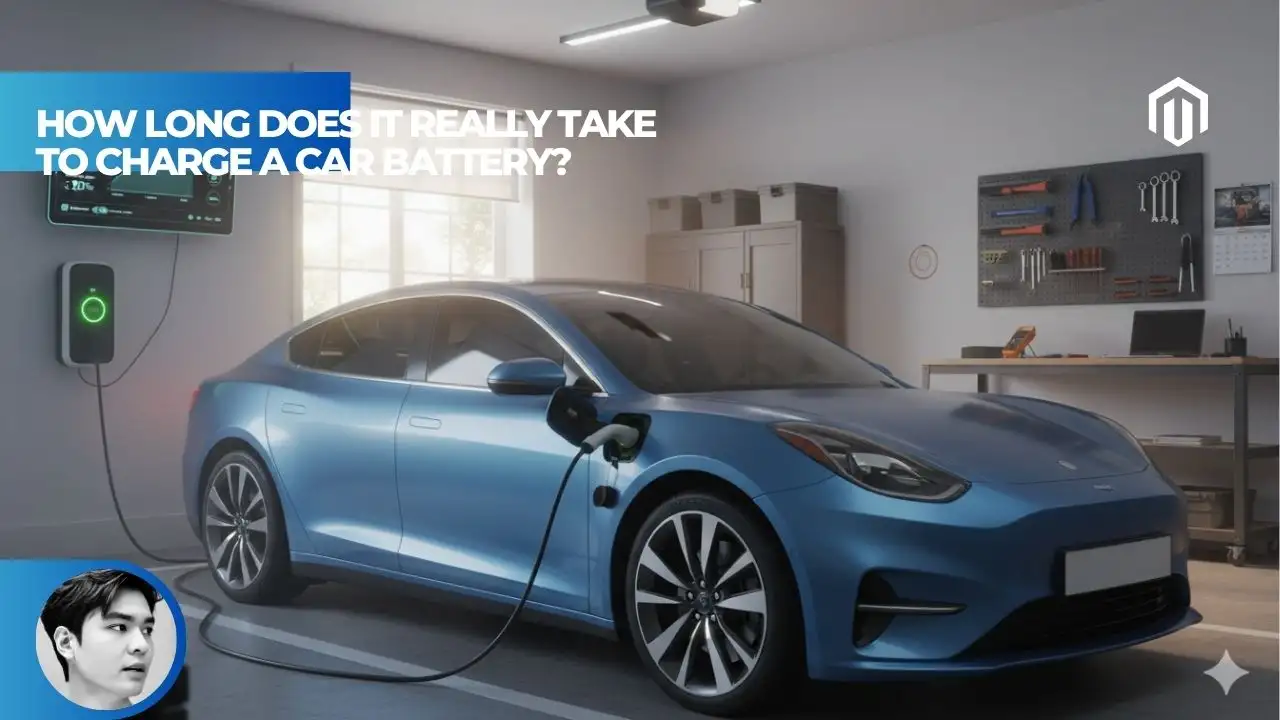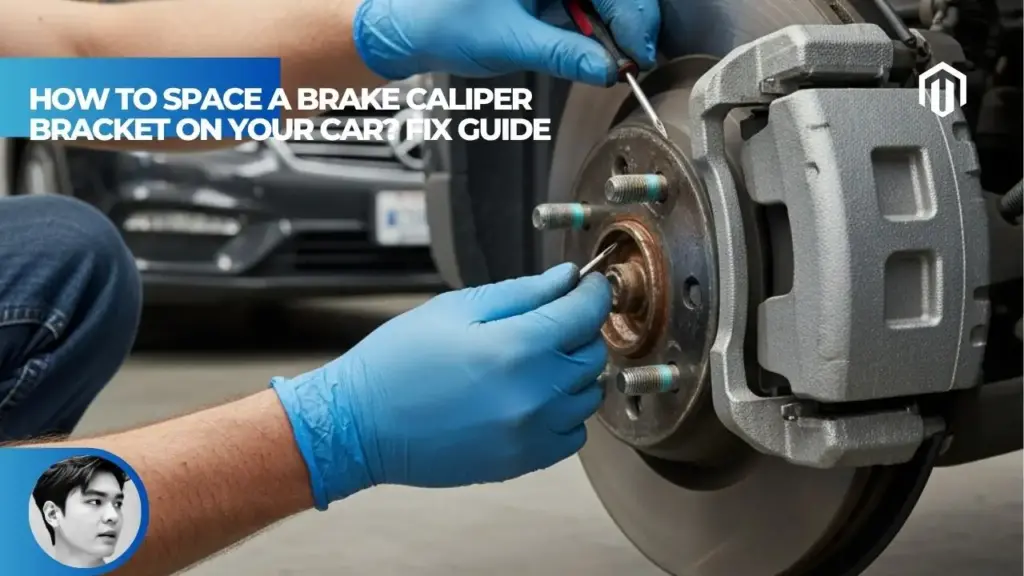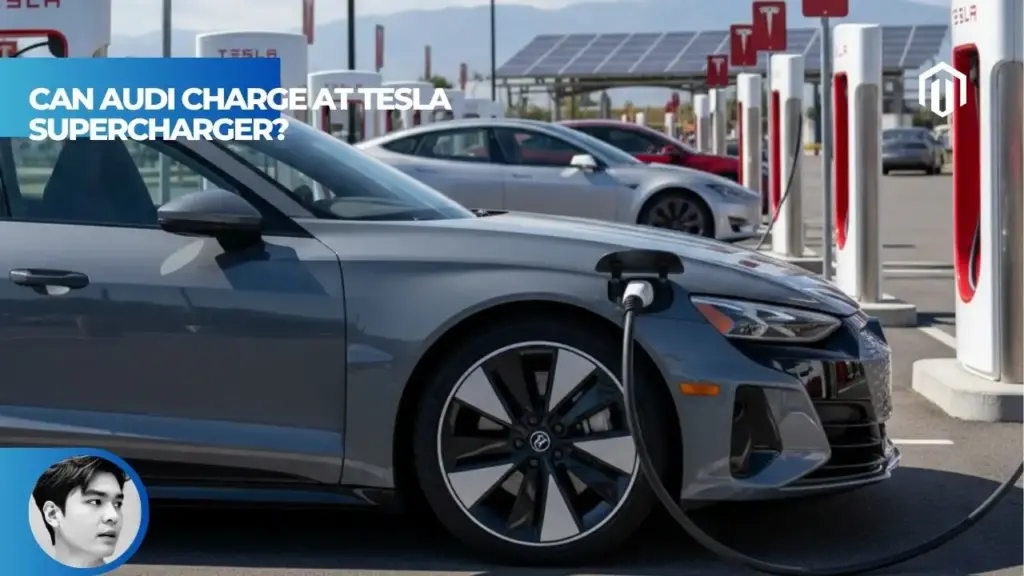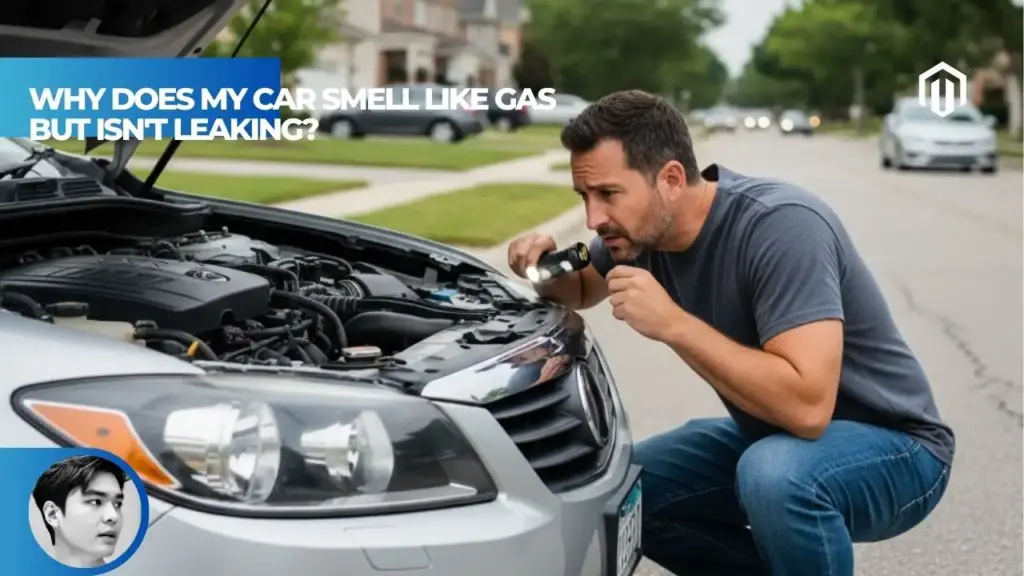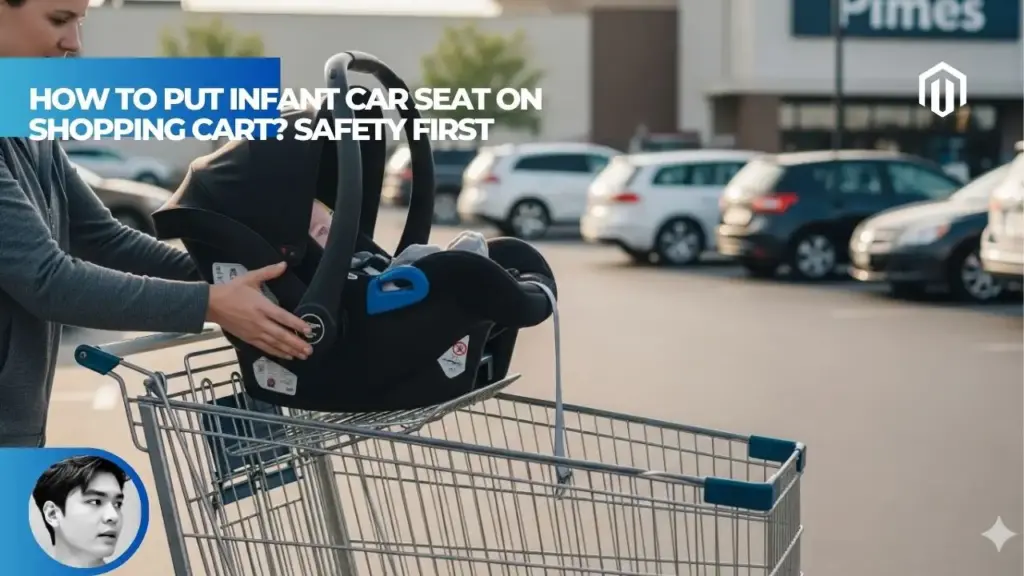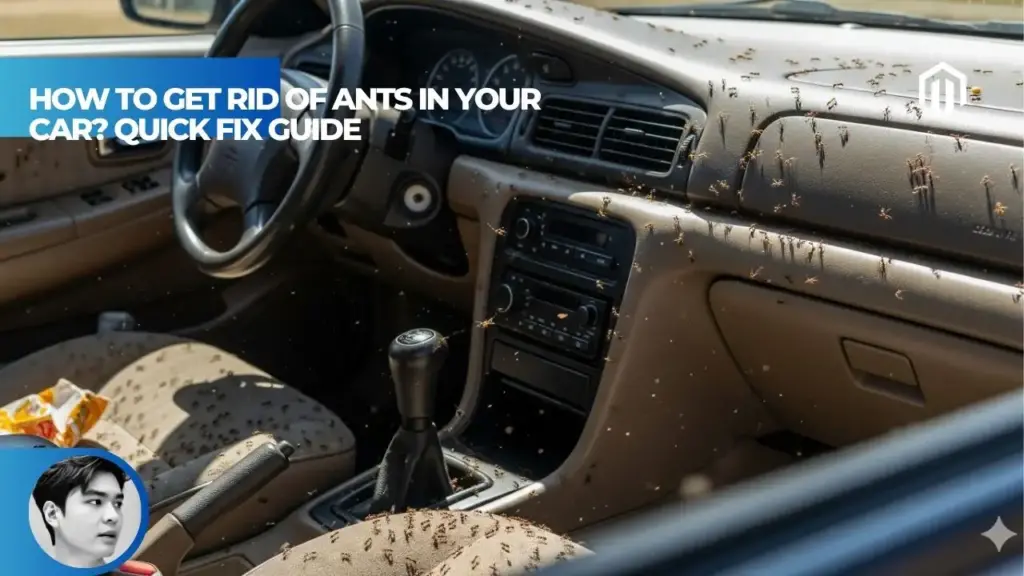You may also like:
- 【Explained】Does BMW Charge for Apple CarPlay? The Full Policy Change Explained
- 【Explained】What Did BMW Start Making Before Cars? (From Planes to Cars)
- 【Explained】Can BMW Charge at Tesla Supercharger? The NACS Adoption Timeline Explained
- 【Explained】What Is the Latest BMW Software Update? (A Step-by-Step Guide)
- 【Explained】What Is More Expensive: BMW or Mercedes? (Cost of Ownership)
BMW first introduced Apple CarPlay as an optional feature in 2016 for select models with NBT Evo iDrive systems, with widespread availability beginning in the 2017 model year. BMW was the first automaker to offer wireless Apple CarPlay connectivity, debuting this feature in the 2017 5 Series.
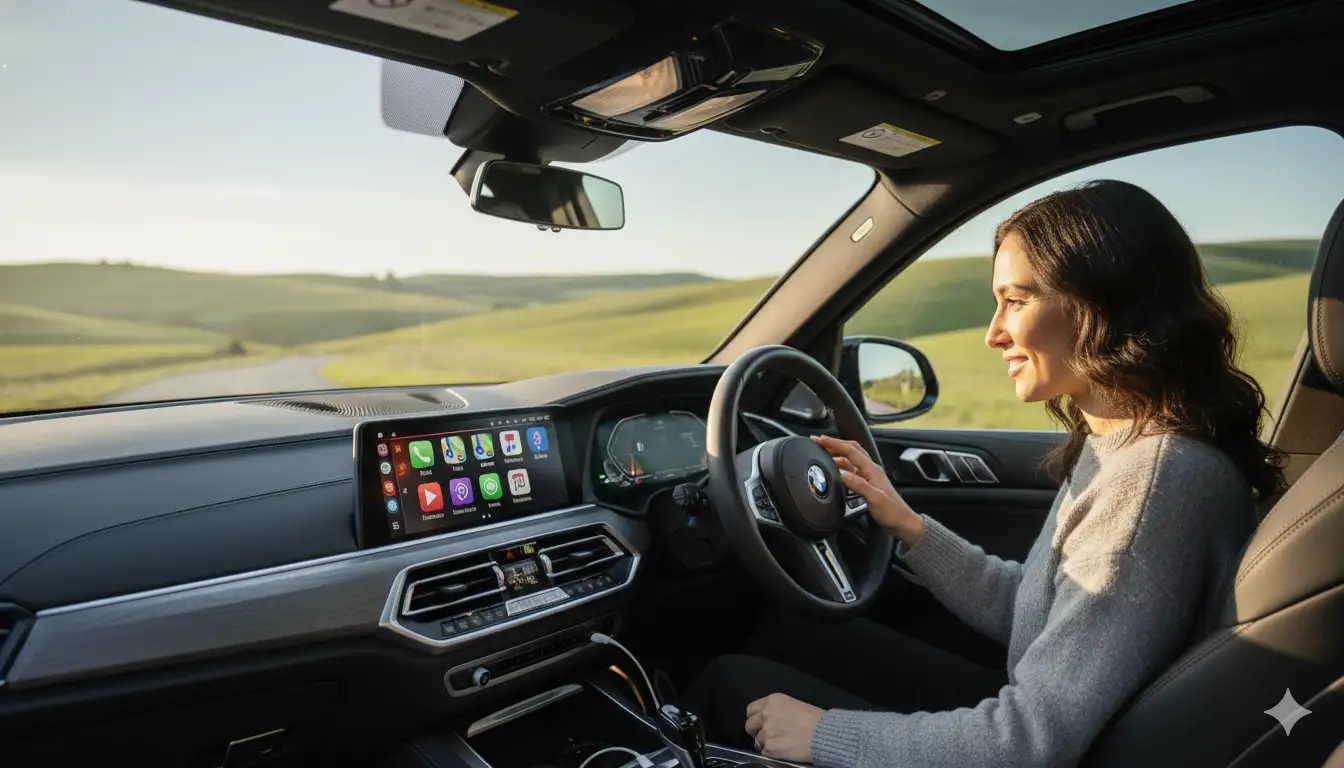
BMW Apple CarPlay Initial Availability – The Direct Answer
Understanding when BMW introduced Apple CarPlay requires examining the gradual rollout across different models and production dates, as well as the unique wireless implementation that set BMW apart from competitors.
BMW Apple CarPlay Debut Year (2016-2017)
BMW officially introduced Apple CarPlay as a retrofittable option for certain models starting from 2016, though availability was initially limited[1]. The feature required vehicles equipped with the NBT Evo iDrive system, which began appearing in BMW production lines around July 2016. This marked BMW’s entry into smartphone integration, arriving notably later than competitors like Mercedes-Benz and Audi.
The delayed adoption stemmed from BMW’s commitment to its proprietary iDrive system, which the company had invested heavily in developing. According to Autvex automotive technology experts, BMW’s cautious approach reflected their desire to maintain control over the in-car user experience while ensuring seamless integration.
First Model Year with BMW CarPlay
The 2017 model year marked the first widespread availability of Apple CarPlay across BMW’s lineup[1]. Models produced after July 2016 with the appropriate iDrive hardware could be equipped with CarPlay, either as factory-installed or dealer-activated options. The initial rollout included popular models like the 3 Series, 5 Series, and X3.
BMW’s implementation differed from competitors by requiring specific option codes and hardware configurations. Vehicles needed option code 6CP (CarPlay Preparation) to enable the feature, even if the hardware was technically capable.
BMW 2017 Apple CarPlay Availability
The 2017 model year saw Apple CarPlay become available across BMW’s core lineup. Models receiving CarPlay in 2017 included:
| Model Series | CarPlay Availability | Standard/Optional |
|---|---|---|
| 2 Series | Available | Optional |
| 3 Series | Available | Optional |
| 4 Series | Available | Optional |
| 5 Series | Available | Standard on some trims |
| 6 Series | Available | Standard on some trims |
| 7 Series | Available | Optional |
| X3 | Available (Sept 2016+) | Optional |
| X4 | Available (Sept 2016+) | Optional |
| X5 | Available (Aug 2016+) | Optional |
| X6 | Available (Aug 2016+) | Optional |
CarPlay for 2016 BMW Models
Select 2016 BMW models could receive Apple CarPlay, but only those produced after July 2016 with NBT Evo systems[2]. This created confusion among 2016 model year owners, as vehicles produced earlier in the year lacked the necessary hardware. BMW offered retrofit solutions for some compatible vehicles, though costs varied significantly.
For owners wondering about purchasing used 2016 BMWs with CarPlay capability, checking the production date becomes essential. Vehicles built before July 2016 typically require aftermarket solutions.
Wireless Apple CarPlay BMW Release Date
BMW made history by becoming the first automaker to introduce wireless Apple CarPlay with the 2017 5 Series in February 2017[3]. This groundbreaking feature eliminated the need for a Lightning cable connection, using Bluetooth and Wi-Fi to maintain the connection between iPhone and vehicle. The wireless implementation quickly expanded to other models with compatible hardware.
The wireless functionality represented a significant technological achievement, as BMW developed the integration before Apple officially supported wireless CarPlay protocols. This innovation positioned BMW as a technology leader despite their later adoption of the platform.
Technical Requirements and iDrive Compatibility
The implementation of Apple CarPlay in BMW vehicles depends heavily on the iDrive system version and specific hardware configurations.
Which iDrive Version Supports Apple CarPlay
Apple CarPlay requires minimum iDrive 5.0/6.0 (NBT Evo) systems for native BMW implementation[4]. Earlier iDrive versions, including CCC, CiC, and standard NBT, lack the necessary hardware for official CarPlay support. The compatibility breakdown is:
- NBT Evo ID5/ID6: Full CarPlay support (2016+)
- iDrive 7.0: Standard CarPlay inclusion (2018+)
- iDrive 8.0: Enhanced CarPlay with larger displays (2021+)
- Earlier systems: Require aftermarket solutions
BMW CarPlay Preparation (Option S6CPA)
The CarPlay Preparation option, coded as S6CPA, indicates a vehicle’s readiness for Apple CarPlay activation[2]. This option includes the necessary hardware and software framework but may require activation through BMW ConnectedDrive or dealer coding. Vehicles without this option face higher retrofit costs.
Checking for S6CPA presence involves examining the vehicle’s build sheet or using a VIN decoder. BMW dealers can also verify this option’s presence through their systems.
BMW NBT EVO Head Unit CarPlay
The NBT Evo head unit, introduced in mid-2016 production, provides the processing power and connectivity required for CarPlay[4]. This system features enhanced graphics capabilities, faster processors, and the wireless protocols necessary for BMW’s cable-free implementation. NBT Evo units can be identified by their faster boot times and improved menu responsiveness compared to standard NBT.
Retrofitting older vehicles with NBT Evo units remains possible but expensive, often costing $2,000-3,500 including installation and coding.
iDrive 7 CarPlay Standard
Beginning with iDrive 7.0 in 2018, BMW made Apple CarPlay a standard feature on most models[1]. This system introduced the BMW Operating System 7.0, featuring larger displays, improved graphics, and enhanced smartphone integration. The standardization reflected customer demand and competitive pressure.
iDrive 7 brought significant improvements to CarPlay functionality, including better screen scaling, faster connection times, and improved stability. For those considering newer BMW models, iDrive 7 or later ensures CarPlay availability.
BMW Wireless Connection CarPlay (Bluetooth/Wi-Fi)
BMW’s wireless CarPlay uses a combination of Bluetooth for initial pairing and Wi-Fi for data transfer[3]. This dual-protocol approach ensures stable connections while maintaining the bandwidth necessary for smooth operation. The system automatically connects when entering the vehicle with a paired iPhone.
The wireless implementation does impact battery life on connected devices, with many users reporting 15-20% faster battery drain during extended drives. BMW addressed this by offering wireless charging pads in compatible models.
How to Activate CarPlay on a BMW
Activating CarPlay on a compatible BMW involves several steps:
- Verify compatibility through VIN decoder or dealer inquiry
- Update iDrive software to the latest version
- Purchase activation if not included (varies by model/year)
- Pair iPhone via Bluetooth in iDrive settings
- Accept CarPlay prompts on both phone and iDrive screen
- Configure preferences for automatic connection
Some models require dealer activation even with compatible hardware, particularly 2016-2017 vehicles.
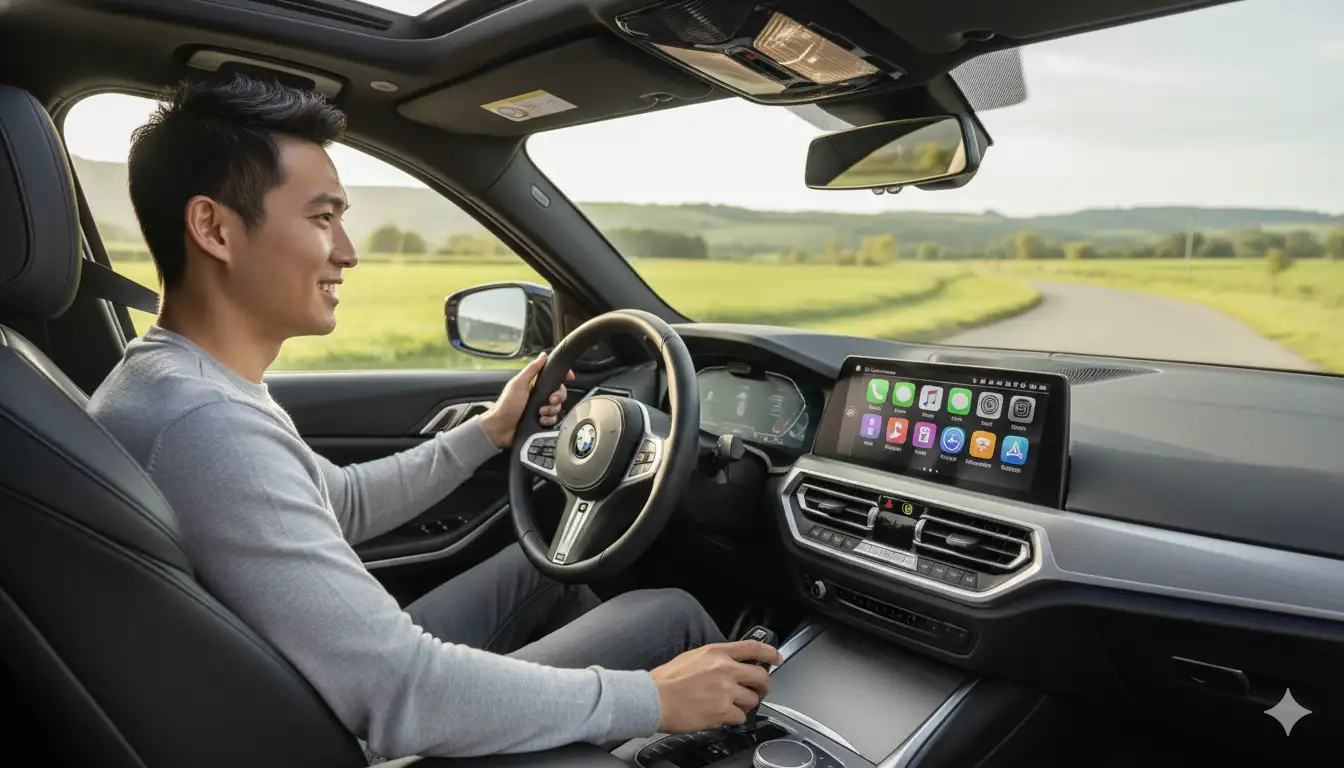
Historical Context and BMW CarPlay Evolution
BMW’s approach to Apple CarPlay differed significantly from other manufacturers, creating controversy and ultimately leading to policy changes.
BMW Apple CarPlay Subscription Fee
BMW initially offered CarPlay as a $300 one-time option, then controversially switched to an $80 annual subscription model in July 2019[5]. This made BMW the only manufacturer charging recurring fees for CarPlay access. The subscription model included:
- First year free with new vehicles
- $80/year thereafter
- $300 for “lifetime” (20-year) subscription
- Transferable between owners
The decision sparked significant customer backlash and negative media coverage.
When Did BMW Drop the CarPlay Subscription
BMW reversed course in December 2019, making CarPlay free for vehicles with iDrive 7.0[6]. Customers who had already purchased subscriptions received automatic upgrades to unlimited access. According to Autvex market analysis, the subscription model damaged BMW’s technology reputation and likely influenced purchasing decisions.
The reversal demonstrated BMW’s responsiveness to customer feedback, though some models with older iDrive systems still required one-time purchase fees.
BMW vs Competitors CarPlay Adoption (Audi, Mercedes)
BMW lagged behind German competitors in CarPlay adoption:
| Manufacturer | CarPlay Introduction | Implementation Type | Initial Cost |
|---|---|---|---|
| Mercedes-Benz | 2014 | Wired | Free / Standard |
| Audi | 2015 | Wired | Free / Standard |
| BMW | 2016 / 2017 | Wireless | $300 Option |
While Audi includes CarPlay standard since 2015, BMW’s later adoption came with the advantage of wireless connectivity.
BMW Was the First with Wireless CarPlay
Despite late adoption, BMW achieved a significant milestone by being the first manufacturer to offer wireless CarPlay in production vehicles[3]. The 2017 5 Series premiered this technology, beating Apple’s own wireless CarPlay announcement by several months. This innovation partially offset criticism of BMW’s delayed implementation.
The wireless system required extensive development of proprietary protocols, as Apple hadn’t yet released official wireless CarPlay specifications.
CarPlay Retrofit Options for Older BMWs
Owners of pre-2016 BMWs have several retrofit options:
- Official BMW retrofit: $500-750 for compatible NBT Evo vehicles
- NBT Evo upgrade: $2,000-3,500 for older iDrive systems
- Aftermarket modules: $300-800 for plug-and-play solutions
- Screen replacement: $1,500-2,500 for complete system upgrades
Aftermarket solutions from companies like BimmerTech offer cost-effective alternatives, though they may lack the seamless integration of factory systems.
Model and Generation Specific Availability
Different BMW models received Apple CarPlay at varying times based on their production cycles and iDrive system updates.
BMW 5 Series 2017 CarPlay
The 2017 5 Series (G30) holds the distinction of being the first BMW with wireless Apple CarPlay[3]. Launched in February 2017, this model showcased BMW’s technological capabilities with its 10.25-inch touchscreen and advanced iDrive system. All 2017 5 Series models included CarPlay preparation, though activation costs varied by market.
The 5 Series implementation set the standard for other BMW models, demonstrating the benefits of wireless connectivity and establishing the user interface paradigm.
BMW X3 CarPlay Year
The BMW X3 received Apple CarPlay starting with September 2016 production for the F25 generation[2]. The all-new G01 X3 launched for 2018 included CarPlay as standard equipment on models with the larger navigation display. This timing aligned with the model’s redesign and iDrive system upgrade.
For those researching BMW X3 comparisons, CarPlay availability becomes a key differentiator for model years.
BMW 3 Series F30/G20 CarPlay Year
The F30 3 Series (2012-2019) received CarPlay capability for vehicles produced after July 2016 with NBT Evo systems. However, most F30 models missed this window, requiring aftermarket solutions. The G20 3 Series (2019+) includes CarPlay as standard equipment with iDrive 7.0.
This generational divide created confusion in the used car market, as 2016-2018 F30 models might or might not have CarPlay depending on production date and options.
Does My 2018 BMW Have CarPlay
Most 2018 BMWs included Apple CarPlay capability, though availability depended on:
- iDrive version: Must be NBT Evo or newer
- Option codes: Look for 6CP or 6C
P
- Production date: Generally standard after March 2017
- Model line: Higher trim levels more likely to include
Checking the iDrive system version provides the quickest answer—accessing the software version through settings reveals compatibility.
BMW i3 and i8 CarPlay Year
The electric BMW i3 and hybrid i8 presented unique challenges for CarPlay integration. The i3 received CarPlay capability in late 2017 production, while the i8 gained compatibility in 2018[6]. Both models retained older iDrive 6.0 systems longer than conventional BMWs, requiring specific software updates.
These models still required paid activation even after BMW dropped subscription fees for newer vehicles, reflecting their older infotainment architecture.
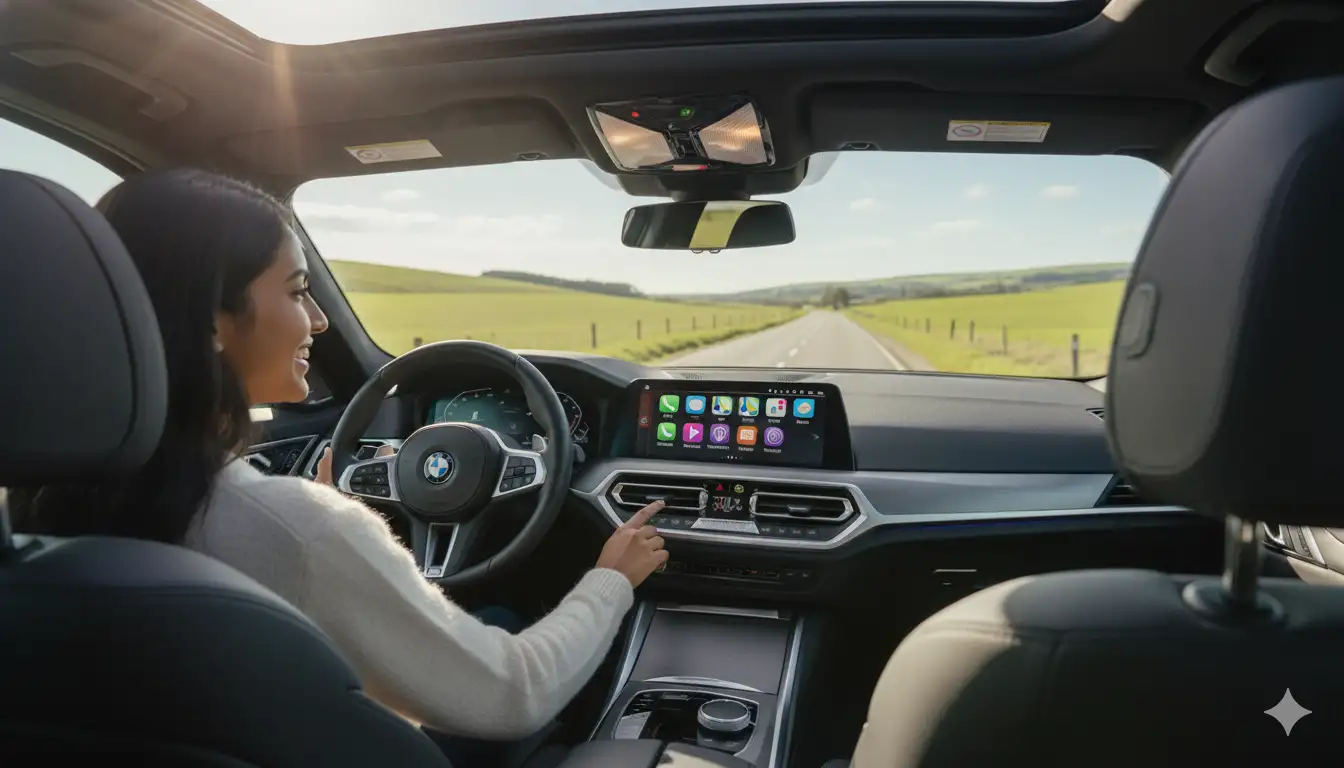
Key Takeaway
BMW first introduced Apple CarPlay as an optional feature in 2016 for select models with NBT Evo iDrive systems, with widespread availability beginning in the 2017 model year. BMW was the first automaker to offer wireless CarPlay connectivity and now includes it standard on all models with iDrive 7 or newer.
Key Points:
- July 2016 production marks the CarPlay compatibility cutoff
- 2017 5 Series pioneered wireless CarPlay technology
- NBT Evo iDrive system minimum requirement for native support
- Subscription model lasted from July-December 2019
- iDrive 7.0+ includes CarPlay standard (2018+ models)
- Retrofit options available for compatible older models
- Option code 6CP indicates CarPlay preparation
Next Steps
Check your BMW’s production date (found on the driver’s door jamb) to determine if it was built after July 2016. Use BMW’s VIN decoder or contact your dealer to verify if your vehicle has CarPlay Preparation option (S6CPA). For compatible vehicles without activation, budget $300-500 for dealer enabling.
Consider your usage patterns when evaluating retrofit options for older BMWs. If you’re shopping for a used BMW, prioritize 2017+ models for guaranteed CarPlay compatibility. For pre-2016 vehicles, research aftermarket solutions from reputable providers like BimmerTech or Bimmer-Tech.
Update your iDrive system to the latest software version through BMW ConnectedDrive or your dealer to ensure optimal CarPlay performance. If experiencing connection issues, reset network settings on your iPhone and re-pair with your BMW’s system.
Frequently Asked Questions
Was Apple CarPlay free on BMW when it was first released?
No, BMW initially offered CarPlay as a paid option ($300), then switched to a subscription model ($80/year) before making it free in December 2019.
Can I get Apple CarPlay installed on my 2016 BMW?
Select 2016 BMW models produced after July 2016 with NBT Evo systems can have CarPlay retrofitted through BMW dealers or aftermarket solutions.
Which BMW iDrive system is needed for Apple CarPlay?
Apple CarPlay requires minimum iDrive 5.0/6.0 (NBT Evo) from July 2016 production, with iDrive 7 and newer including it standard.
Is BMW Apple CarPlay wired or wireless?
BMW was the first manufacturer to offer wireless Apple CarPlay starting with the 2017 5 Series; all compatible BMWs support wireless connection.
What is the cost of Apple CarPlay for older BMW models?
Retrofit costs vary from $300-500 for activation on compatible models, while aftermarket solutions range from $500-1,500 depending on hardware requirements.
Does BMW offer Android Auto?
BMW began offering Android Auto in 2020 model year vehicles, later than Apple CarPlay introduction.
Why did BMW originally charge a subscription fee for CarPlay?
BMW claimed ongoing development costs for wireless technology integration and compatibility updates justified the subscription model.
How can I check if my BMW has the CarPlay Preparation option?
Check for option code S6CPA in your vehicle’s build sheet or use BMW VIN decoder to verify CarPlay Preparation presence.
Does the latest BMW iDrive 8 or 9 come with CarPlay standard?
Yes, all BMWs with iDrive 8 (2021+) and iDrive 9 (2023+) include Apple CarPlay as standard equipment.
References
- BMW CarLink Factory. (2025). What Year Did BMW Get Apple CarPlay. https://bmw.carlinkitfactory.com/what-year-did-bmw-get-apple-carplay-2/
- BMW X1 Forum. (2018). The F48 & Apple CarPlay – MJE60 Guide. https://f48.bimmerpost.com/forums/showthread.php?t=1588056
- BMW Blog. (2016). BMW First Automaker To Introduce Wireless Apple CarPlay Integration. https://www.bmwblog.com/2016/10/21/bmw-first-automaker-introduce-wireless-apple-carplay-integration/
- Integrated Automotive. (2020). Which iDrive version do I have, CCC, CiC or NBT? https://integratedautomotive.co.uk/which-idrive-version-do-i-have/
- Engadget. (2019). BMW adds an $80 yearly subscription for Apple’s CarPlay. https://www.engadget.com/2019-07-24-bmw-adds-a-80-yearly-subscription-for-apples-carplay.html
- Auto Express. (2019). BMW rows back on decision to charge Apple CarPlay subscription fees. https://www.autoexpress.co.uk/bmw/107492/bmw-rows-back-on-decision-to-charge-apple-carplay-subscription-fees

I am a senior automotive analyst at Autvex. Expert vehicle evaluations, in-depth reviews, and objective analysis helping readers make informed automotive decisions with years of industry experience.

